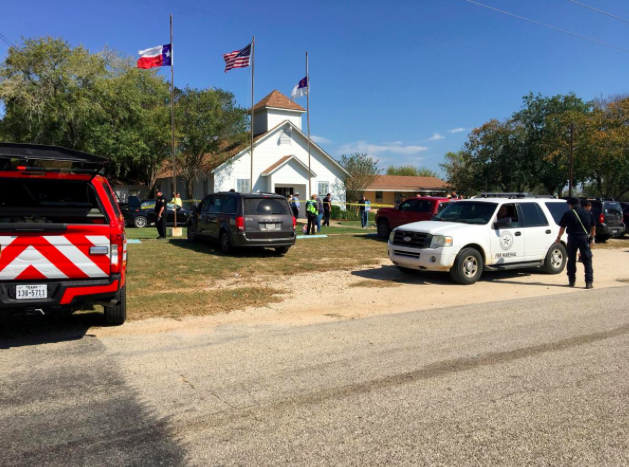Sutherland Springs massacre: Is arming churches the answer?
Is it too soon to talk, yet again, about gun control?
Another community has been devastated by an act of random violence. The fact that it was the church in Sutherland Springs seems to make it worse, though all grief is the same. What darkness there is in the souls of some people. Among the dead is a pregnant woman and her children. It is – almost – overwhelming.
What is also overwhelming is how quickly responses become polarised between advocates for gun control and advocates for the Second Amendment, the 'right to bear arms'. The two are not necessarily mutually exclusive, but in practice it does seem that way – and it's this that is paralysing America's ability to deal with the problem that is, among advanced democracies, uniquely its own.

The issue's epitomised by the Texas Attorney General, Ken Paxton, who said churches should consider 'arming some of the parishioners' or hiring security guards to protect themselves during services.
And let's be clear: he's not altogether wrong. Churches should be security-aware. There are responsible companies set up to train and help them. I've written before about the dangers and drawbacks of routinely arming church members, and about the unreconcilable tensions between living as followers of the Prince of Peace and going to church every Sunday with a conscious willingness to use deadly force against a supposed attacker. But in a country where there are so many guns, normality is twisted.
The problem with Paxton's approach though, is that it's so tragically inadequate. Because the truth is that horrifying as these mass shootings are, in the overall statistics of Americans killed by gunfire, they barely register.
According to the Brady Campaign, in one year on average nearly 115,000 people are shot in the US in murders, assaults, suicides and suicide attempts. 33,880 die. Of these, 11,564 are murdered, but a staggering 21,037 die from suicide. Of the rest, 544 are killed unintentionally, 468 by 'legal intervention' and 267 'die but intent was unknown'.
Those 21,037 represent almost half of total US deaths by suicide. And it's not surprising: death by gunshot takes no planning. You can do it on impulse; it's too easy.
And while 544 die by gun accidents, a further 16,428 are shot and survive, with a varying quality of life afterwards.
Gun control matters not just because of atrocities like the one in Sutherland Springs. It matters because more guns mean more accidents and more suicides, not just more murders.
Might this tragedy have been prevented with tighter gun laws? Who knows? But what's clear is that a response that says the way to stop gun deaths is to have more guns isn't going to solve the bigger problem. It's just an arms race, and we know where that leads.
Churches should protect themselves in appropriate ways. But they shouldn't buy into that story the world tells, where the only response to a threat is to make a bigger threat. There's a different story to tell, that isn't about rights but about responsibilities – that doesn't idolise the Second Amendment (and just think about that word), but asks, soberly and honestly, how a society can best protect its most vulnerable people from the danger of deadly weapons.
Somehow, disarmament has to be part of that conversation.
Follow Mark Woods on Twitter: @RevMarkWoods











